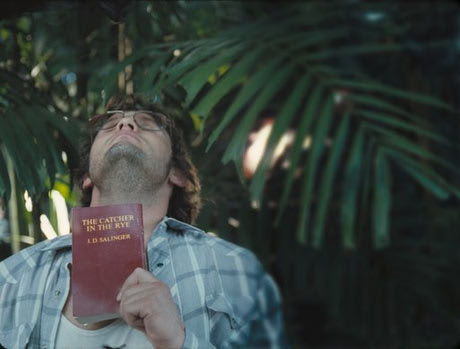Twenty-eight years later, the assassination of John Lennon remains senseless and any filmmaker must offer fresh insight to deepen our understanding. We already know that Mark David Chapman was a loser, alienated from his naïve wife and flaky mother, who floated through life without an identity until he latched onto Holden Caulfield, the anti-hero of J.D. Salingers The Catcher In The Rye. Determined to rid the world of the "phoney John Lennon, Chapman flew to New York in December 1980 and entered history. Director Piddington tries to stay neutral even though he adopts Chapmans perspective. All the voiceovers are lifted from Chapmans journals and the cinematography and editing (impressive at times) reflect Chapmans warped psyche. Piddington shot on authentic locations, starting with Chapmans Hawaii haunts and the Dakota building where Lennon lived and died why the Dakota consented is baffling. However, in one key scene, Piddington makes a glaring gaffe by showing modern-day Times Square. "I don't think it matters, he blithely says on his audio commentary. While Jonas Ball is believable as the crazy loner, the problem is Chapman isnt that interesting. After two long hours he comes off as a selfish narcissist what we see is what we get. Piddingtons commentary gives us the nuts-and-bolts of shooting on a low budget, though it doesnt impart the reasons why he embarked on making this film. Some of the 14 deleted scenes wouldve worked in the movie because we get to see how others regard Chapman. Instead, seek out the 1988 PBS Frontline documentary on Chapman, which offers far more insight and chills. It was probably not his intent but Piddington has created an exploitive film. The constant countdown to Lennons death is bad enough but the bloody re-enactment of Lennons death is galling. Piddington has provided a platform for Chapmans psychotic views, and a shallow one at that.
(Seville)The Killing Of John Lennon
Andrew Piddington

BY Allan TongPublished Aug 7, 2008